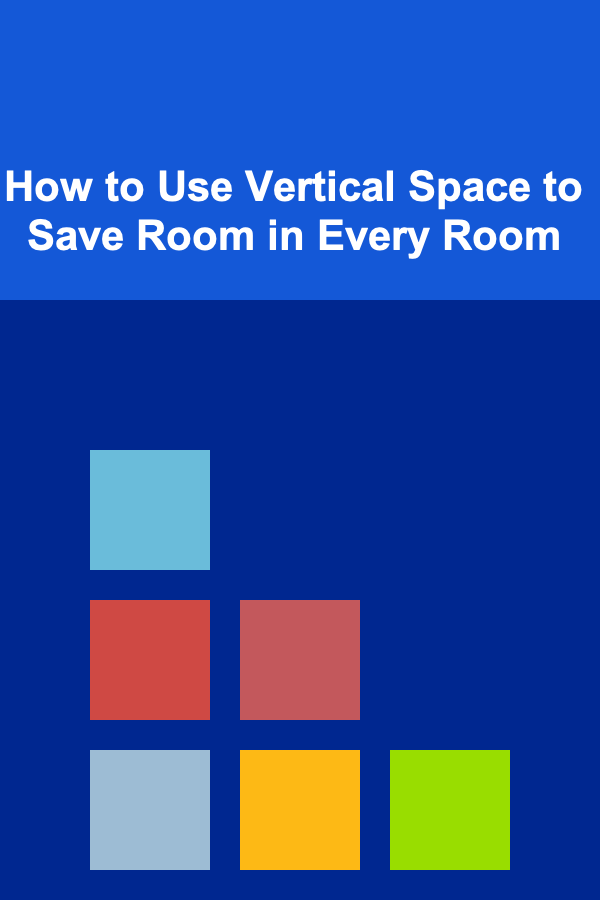
How to Build a UX Portfolio That Gets You Hired
ebook include PDF & Audio bundle (Micro Guide)
$12.99$6.99
Limited Time Offer! Order within the next:

In the world of UX (User Experience) design, a strong portfolio is often the deciding factor between landing your dream job and being overlooked. It's your opportunity to showcase not only your design skills but also your problem-solving ability, process, and impact. Crafting a portfolio that stands out requires more than just showcasing finished projects; it's about telling a story of how you approached each challenge and solved real user problems.
Building a UX portfolio that gets you hired can be an overwhelming task, especially if you're just starting out or transitioning from another field. However, by focusing on the right aspects and strategically presenting your work, you can create a portfolio that highlights your strengths, growth, and potential as a UX designer.
Understand the Role of a UX Portfolio
A UX portfolio is not just a collection of design work. It's a reflection of your thought process, your problem-solving abilities, and your capacity to create user-centered designs. It's your chance to show hiring managers how you think, how you approach design challenges, and how you can make a tangible impact on user experiences.
Your portfolio should convey:
- Your process: How do you approach a design challenge? What steps do you take, and why?
- Case studies: Provide detailed examples of your work, showcasing both the journey and the outcome.
- Your impact: How did your designs improve user experiences or meet business goals?
- Skills: Show your proficiency in tools, frameworks, and methodologies used in UX design, such as wireframing, prototyping, user testing, and interaction design.
Include Strong Case Studies
A UX portfolio is only as strong as the case studies it includes. A case study is more than just a final product; it's the story of how you arrived at that product and the decisions you made along the way. Effective case studies demonstrate not just your final design but also your ability to think critically, iterate, and learn from feedback.
When writing a case study, follow this framework:
- Introduction: Describe the project, its context, and the problem you were trying to solve. Mention any constraints, goals, or important stakeholders.
- Research: Explain your research process, including user interviews, surveys, persona development, or competitive analysis. Show that you understand the user and the problem space.
- Ideation: Detail how you generated and evaluated design solutions. This could include sketches, wireframes, or brainstorming sessions.
- Design: Showcase the final design and explain your design decisions. Discuss the iterations and the rationale behind the choices you made.
- Testing and Evaluation: Describe how you tested the design with users and what insights you gathered from usability testing. Show how you refined your design based on feedback.
- Impact and Results: Provide data or qualitative feedback that demonstrates how your design solved the problem or met the project's objectives.
Focus on including at least 2-3 well-documented case studies in your portfolio. These case studies should vary in complexity and scope, showcasing your versatility as a designer.
Focus on Your Process, Not Just the Outcome
One of the key elements of a strong UX portfolio is demonstrating your design process. Employers want to know how you approach problems, not just what the final product looks like. They want to see your ability to tackle challenges, iterate, and refine your designs based on user feedback.
For each project, highlight the following:
- User-centered approach: Explain how you prioritized the user's needs, pain points, and goals throughout the design process.
- Problem-solving: Describe the challenges you faced and how you overcame them. Did you have to pivot your design direction based on user testing or stakeholder feedback?
- Iteration: Show that you're open to feedback and capable of refining your designs. Include multiple iterations of key screens or elements, along with explanations of the changes you made and why.
Show a Range of Work
While it's essential to demonstrate depth in your case studies, it's also important to show a range of skills and design challenges. Include projects that showcase your ability to work on various aspects of UX design, such as:
- Interaction design: Focus on the usability and behavior of the product.
- Visual design: Include projects where you demonstrate an eye for design, such as typography, color theory, and layouts.
- Wireframes and prototypes: Showcase your ability to create low-fidelity and high-fidelity prototypes.
- User research: Highlight your skills in gathering insights and understanding user needs through qualitative and quantitative research.
If you don't have a lot of real-world experience yet, include personal projects, redesigns, or volunteer work. These can demonstrate your initiative and passion for design. Even a redesign of an existing app or website can show your understanding of UX principles and your ability to apply them to a real product.
Highlight Your Collaboration and Communication Skills
UX design is not a solitary activity. Collaboration and communication are vital components of the process. Employers want to know that you can effectively communicate your ideas and work well with others, whether it's with developers, product managers, or stakeholders.
Throughout your case studies, emphasize your:
- Collaboration: How did you work with other team members? What role did you play in cross-functional teams?
- Stakeholder management: Show how you interacted with stakeholders and incorporated their feedback into your designs.
- Communication: Highlight how you presented your design ideas and rationale, whether through presentations, user flows, or prototypes.
Being able to effectively communicate and collaborate is just as important as your design skills, so make sure to include examples of how you worked with others during the design process.
Make It Visually Appealing
Your portfolio should be as well-designed as the work it showcases. Since you're a UX designer, the look and feel of your portfolio are just as important as the content. It should be easy to navigate, visually appealing, and reflective of your design sensibilities.
Here are some tips for making your portfolio visually appealing:
- Consistent branding: Use a consistent color scheme, typography, and layout to reflect your personal design style.
- Clear navigation: Make it easy for users (potential employers) to find your work. Use a simple, intuitive navigation system.
- Showcase your work: Don't let the design overshadow your work. Make sure your projects are front and center and easy to explore.
- Responsive design: Ensure that your portfolio looks great on any device, from desktop to mobile. A responsive design shows that you're mindful of user experience across different platforms.
Include Testimonials or References
Adding testimonials or references from previous clients, colleagues, or mentors can provide social proof of your skills and professionalism. A strong recommendation from someone who has worked with you can help reinforce your expertise and reliability.
If you don't have formal testimonials yet, consider asking a former supervisor, mentor, or colleague to provide a short quote about your work ethic, design skills, or ability to solve problems.
Keep It Up to Date
A portfolio is a living document that should evolve with your career. As you work on new projects, continue to update your portfolio with fresh case studies and examples of your work. Outdated portfolios can give the impression that you're not keeping up with trends or evolving as a designer.
Set aside time every few months to review and update your portfolio. Add new projects, revise old ones, and ensure that everything is aligned with your current design skills and career goals.
Showcase Your Passion and Growth
Hiring managers want to see that you're passionate about UX design and committed to continuous learning. Your portfolio should reflect your growth as a designer. Show how you've improved your skills, tackled new challenges, and taken on increasingly complex projects.
You can demonstrate your growth by:
- Including personal or side projects that highlight your initiative.
- Discussing how you've improved specific skills (e.g., learning new design tools, improving your user research methods, etc.).
- Sharing any design-related courses, certifications, or conferences you've attended to stay current with industry trends.
Employers want to hire designers who are eager to learn and grow within their role, so make sure your portfolio reflects your passion for design and continuous improvement.
Tailor Your Portfolio to the Job
Finally, it's important to tailor your portfolio for the job you're applying to. While it's important to showcase a broad range of skills, you may want to highlight specific projects or skills that align with the job description.
If you're applying for a job that emphasizes user research, for example, prioritize case studies where you led research initiatives. If the job focuses on interaction design, showcase projects where you demonstrated your ability to create seamless user flows and interactions.
Tailoring your portfolio shows that you're genuinely interested in the position and that you understand the employer's needs.
Building a UX portfolio that gets you hired is a combination of showcasing your skills, demonstrating your design process, and telling a compelling story about your work. By focusing on strong case studies, highlighting your problem-solving abilities, and presenting your work in an engaging, visually appealing way, you can create a portfolio that stands out to potential employers and gets you one step closer to landing your next UX design job.
Reading More From Our Other Websites
- [Weaving Tip 101] Choosing the Right Materials: Yarns, Fibers, and Dyes for Tapestry Weaving
- [Organization Tip 101] How to Create a Tidy and Inviting Guest Room
- [Scrapbooking Tip 101] Turning Everyday Moments into Timeless Keepsakes: Creative DIY Projects
- [Organization Tip 101] How to Designate a Space for Seasonal Craft Projects
- [Home Party Planning 101] How to Host a Successful Potluck Party with a Guest-Submitted Menu
- [Sewing Tip 101] Seasonal Switch-Ups: Transform Your Closet with Smart Clothing Modifications
- [Simple Life Tip 101] How to Host a Simple Potluck Dinner Party That Builds Community---Stress‑Free
- [Home Staging 101] How to Stage Your Home to Sell as a Luxury Property
- [Simple Life Tip 101] Best Low‑Impact Holiday Traditions for Eco‑Focused Families
- [Personal Investment 101] How to Turn Your Deep Learning Skills into Long-Term Passive Income

How to Clean and Maintain Your Refrigerator to Prevent Breakdowns
Read More
How to Create a Checklist for Event Invitations and RSVP Management: An Actionable Guide
Read More
How to Design a Statement Lighting Fixture for Your Dining Room
Read More
How to Renovate Your Home to Improve Indoor Air Quality
Read More
How to Use Vertical Space to Save Room in Every Room
Read More
How to Use Wall Shelves for Effective Storage
Read MoreOther Products

How to Clean and Maintain Your Refrigerator to Prevent Breakdowns
Read More
How to Create a Checklist for Event Invitations and RSVP Management: An Actionable Guide
Read More
How to Design a Statement Lighting Fixture for Your Dining Room
Read More
How to Renovate Your Home to Improve Indoor Air Quality
Read More
How to Use Vertical Space to Save Room in Every Room
Read More